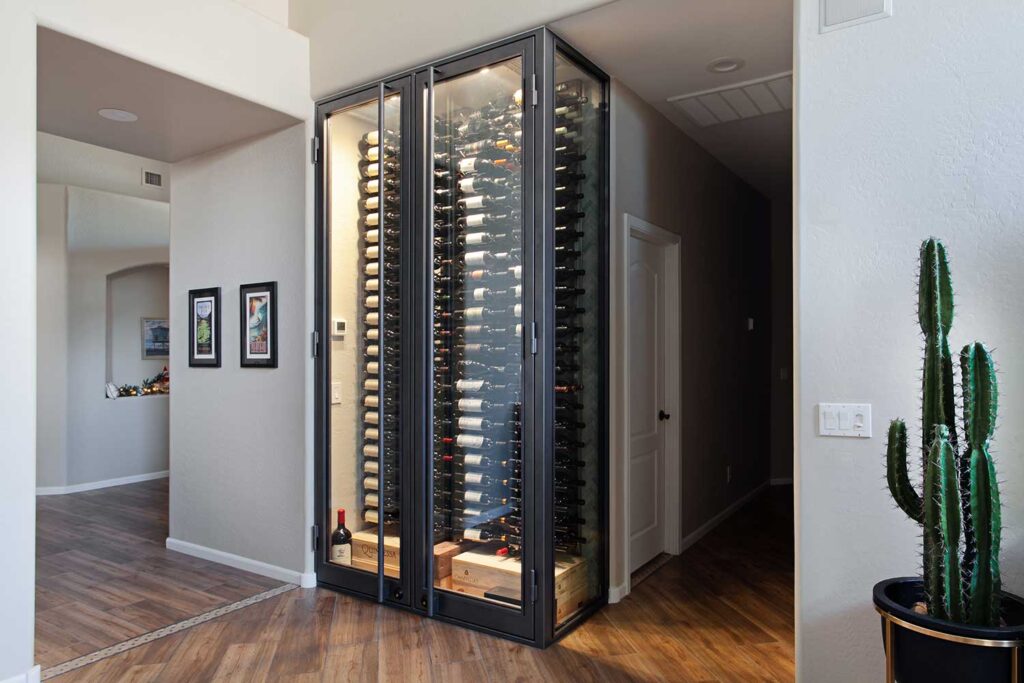So, your wine collection is growing beyond that simple rack in the corner. You’ve started acquiring bottles you want to save for special occasions, and you’re realizing that the kitchen counter or a closet isn’t the ideal long-term home for them. It’s time to consider a dedicated wine cabinet.
But with so many models, sizes, and features on the market, how do you choose the right one? This guide will walk you through the key decisions you need to make to find the perfect wine cabinet for your collection and your home.
Step 1: Assess Your Collection & Future Goals
Before you look at a single model, ask yourself these crucial questions:
How many bottles do I have now? Take a current count.
How quickly is my collection growing? Are you buying a few bottles a month or a few cases?
What do I drink? Is your collection mostly reds you’ll drink within a year, or are you aging rare whites and Champagne for the long term?
The Golden Rule: Choose a cabinet that holds at least 20-30% more than your current collection. Your future self will thank you.
Step 2: Understand the Cooling Technology: The Heart of the Cabinet
This is the most critical technical aspect. There are two main types of wine cooling systems:
Thermoelectric (TEC): Uses an electric current to cool the unit. It’s quieter, vibration-free, and more energy-efficient. Best for smaller cabinets (under 50 bottles) in stable, room-temperature environments.
Pros: Quiet, low vibration, energy-efficient.
Cons: Less powerful; struggles in warm or fluctuating ambient temperatures (like a hot garage).
Compressor-Based: Works like a standard refrigerator. It’s powerful, efficient, and can handle larger capacities and warmer environments.
Pros: Powerful cooling, great for large units, works well in varying ambient temperatures.
Cons: Can produce a slight hum or vibration (though high-end models minimize this).
Our Verdict: For any serious collection or for cabinets over 50 bottles, a compressor-based system is typically the more reliable and versatile choice.
Step 3: Choose Your Configuration & Capacity
Wine cabinets come in several styles to fit different spaces and needs.
Freestanding: Can be placed anywhere with proper ventilation, similar to a regular refrigerator. Offers the most flexibility.
Built-In / Integrated: Designed to be built into cabinetry for a seamless look. These units require front-venting technology and are perfect for kitchens or custom bars.
Countertop / Undercounter: Smaller units ideal for kitchens, home bars, or offices where space is at a premium.
Capacity ranges include:
Compact (6-20 bottles): Perfect for the casual drinker or as a secondary serving unit.
Medium (20-100 bottles): The sweet spot for most enthusiasts.
Large (100+ bottles): For the serious collector.
Step 4: Look for Essential Climate Control Features
A wine cabinet isn’t just a fridge; it’s a climate-controlled sanctuary. Don’t compromise on these features:
Dual-Zone Climate: This allows you to set two different temperatures in separate compartments. Why does this matter? You can age your Champagne and white wines at a colder temperature (e.g., 45-50°F / 7-10°C) while storing your reds at their ideal serving temperature (e.g., 55-65°F / 13-18°C). This is a must-have for diverse collections.
Precise Temperature Control: Look for a digital thermostat that allows for precise adjustments, not just a dial.
Humidity Control: The ideal humidity for wine storage is between 50-70%. This prevents corks from drying out. Many high-end cabinets have built-in humidity control systems, but some rely on a simple water pan. A controlled system is far superior.
Step 5: Consider Design, Aesthetics & Extra Features
Your wine cabinet will be a piece of furniture in your home, so how it looks and functions matters.
Door Style: Do you want clear glass to display your collection, tinted or UV-protected glass to shield wine from light, or a solid wood door for a more traditional look?
Interior Lighting: LED lighting is ideal as it produces no heat. Look for options where you can control the lighting.
Racking Material: Wood (like beech or mahogany) offers a classic, high-end feel. Metal racks are durable, modern, and often easier to clean.
Security: If you have precious bottles or curious children, a lockable door is a valuable feature.
Conclusion: Your Checklist for the Perfect Purchase
To bring it all together, here’s your quick checklist before you buy:
✅ Capacity: Does it hold my current collection + room to grow?
✅ Cooling System: Is a powerful compressor or a quiet thermoelectric unit right for my environment?
✅ Zones: Do I need a single or dual-zone for my mix of reds and whites?
✅ Placement: Will it be freestanding or built-in?
✅ Humidity: Does it have proper humidity control to protect my corks?
✅ Design: Does the style, lighting, and racking material fit my home’s aesthetic?
Investing in a quality wine cabinet is one of the best decisions a wine lover can make. It protects your financial investment and, more importantly, ensures that every bottle you open is a perfect representation of the winemaker’s art. Take your time, do your research, and choose the cabinet that will be the proud home for your collection for years to come.

